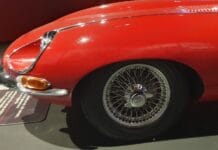Today all major car manufacturers are developing electric cars. But this is not an entirely new trend. In fact, most of the major brands have a long history of electric cars. For example, Peugeot’s first electric car debuted in 1941 – right in the middle of the Second World War.
Electric cars have been around for a long time. While the ICE-powered Benz Patent-Motorwagen was created in 1885, French inventor Gustave Trouvé presented his electric three-wheeled car four years earlier – back in 1881. And the first car to break through 100 km/h barrier was electric La Jamais Contente, driven by Camille Jenatzy – it did it in 1898.
Electric cars were quite popular in the beginning of the 20th century. Steam-powered vehicles required a lot of work and cars with internal combustion engines suffered from one major drawback – the lack of an electric starter. The danger of breaking an arm while trying to start a stubborn engine made electric cars quite attractive.
However, once the road network became more developed, people started thinking about longer trips in their automobiles. Electric cars didn’t quite have the range back then and not every house had electricity. But once the electric starter became more widespread in 1920’s, electric and steam cars were done – the age of petrol has started.

Fast forward a couple of decades and no major French car manufacturer was making electric cars. Actually, the outbreak of the Second World War put the development of all cars on hold. In 1940 France was forced to surrender to Germany, but then in 1941 Peugeot decided to launch its first electric car. Right in the middle of WW2.

At that time French people were dreaming about freedom, not electric cars. No other French automotive company was developing electric vehicles, but Peugeot actually saw an opportunity – a cheap electric car was a way to side-step fuel restrictions imposed on non-military users. Peugeot was never planning to sell a lot of them, but it was a way to keep the factory busy and build something at least some French people found useful.

And so in summer 1941 Peugeot started building the Voiture Légère de Ville (Light City Car), better known as VLV. It was a 2.67 meter long and 1.21 m wide two-seater convertible, powered by four 12 volt batteries. And it was light at just 350 kg – 160 of that was the weight of the batteries.

Peugeot VLV was a very simple electric car, but it still had a rather elegant sleek body. It actually looked like a three wheeler, because the rear wheel were mounted very close together – this construction allowed omitting the differential. However, you could tell this car was built on a budget – there was only one headlight and the interior was incredibly spartan.

As far as performance goes, you can’t really expect much from 1940’s electric car. Peugeot VLV could reach 36 km/h. On a full charge it would do 75-80 km. Which isn’t so bad.
Peugeot made VLVs until the beginning of 1945. In total 377 Peugeot VLV cars have been made.




